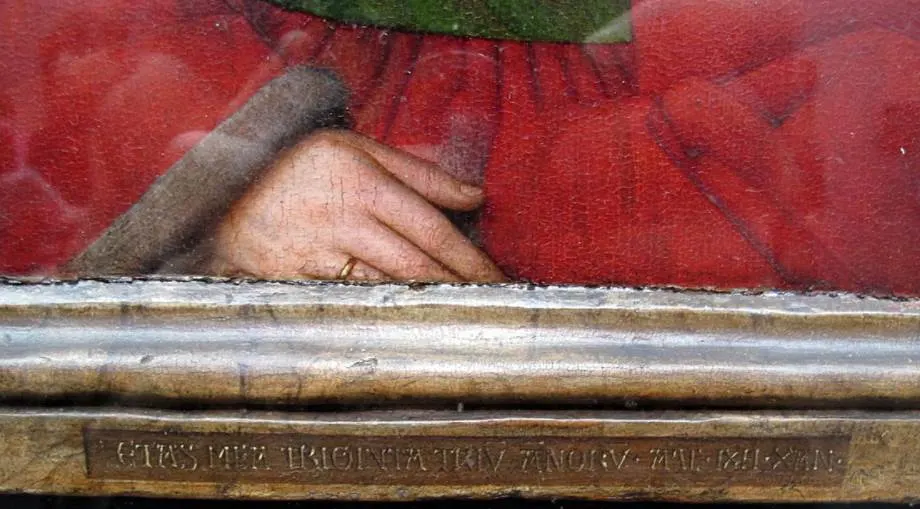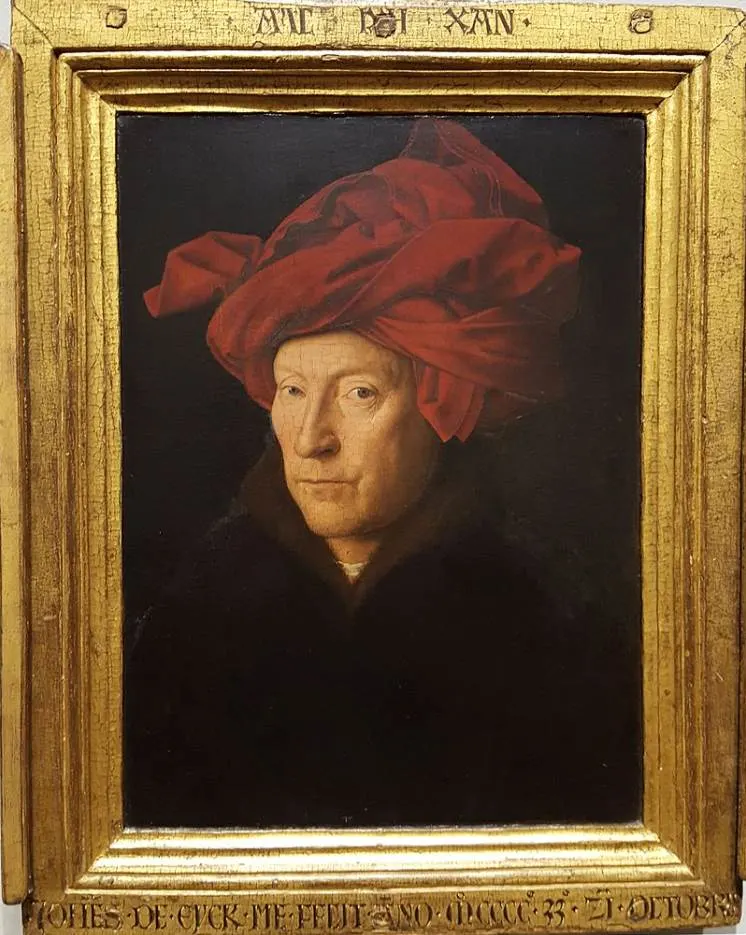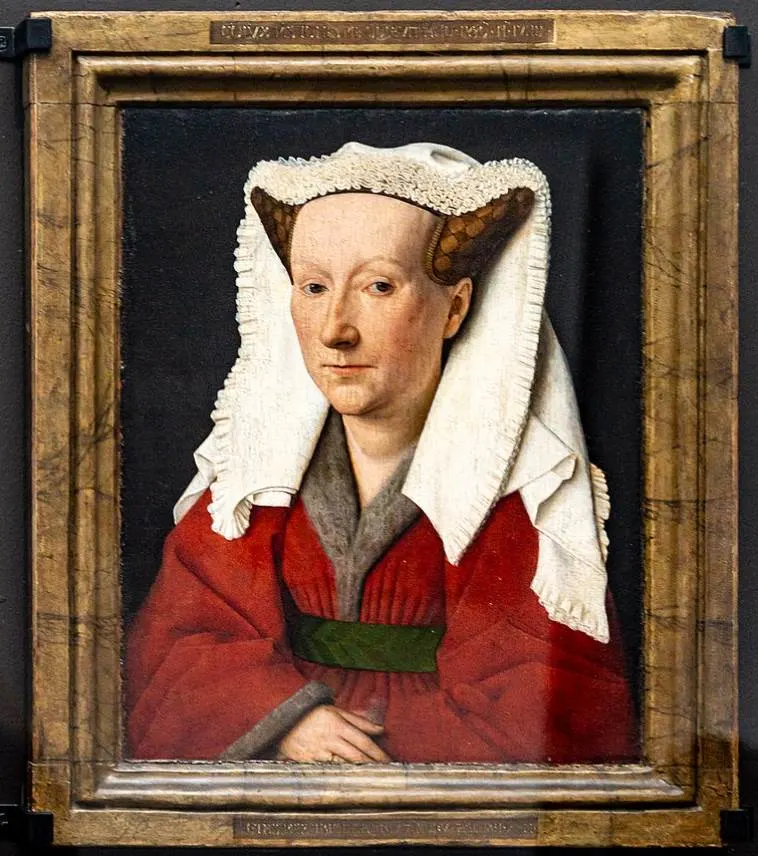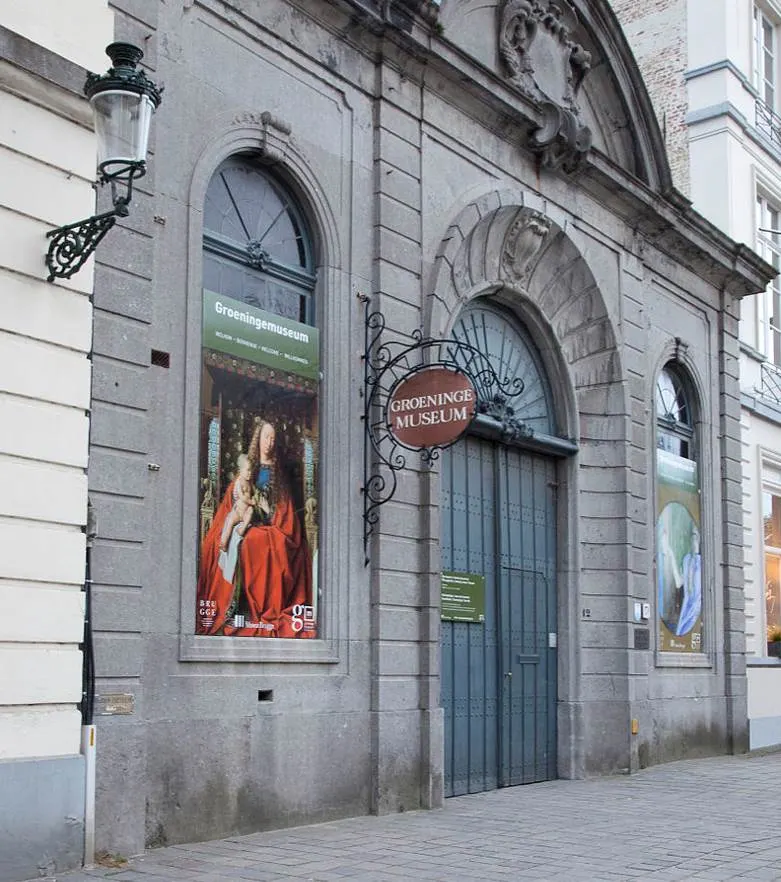Early Netherlandish painter Jan van Eyck (1390-1441) is a mysterious figure in the history of art. He was one of the first masters to perfect the use of oil in his paintings, something that influenced the most famous Renaissance artist and beyond.
One of the most remarkable paintings in his oeuvre wasn’t a commission of a rich patron in Bruges where he lived and worked for most of his life, but a delicate little painting of his wife.
In this article, you’ll discover some of the most interesting facts about the Portrait of Margaret van Eyck, an intriguing work of art by one of the most innovative artists of the Early Northern Renaissance.
1. It was completed just 2 years before the artist passed away
Jan van Eyck was one of the leading figures of the Flemish Primitives, artists who were active in the 15th and 16th centuries in the Habsburg Netherlands. He was born in Maaseik, a city in modern-day Belgium, and his name is a reference to this as it was known as “Maaseyck” back then.
He became the court painter of Phillip the Good, the Duke of Burgundy, in 1425, and permanently settled in Bruges in 1429. This gave him the artistic freedom to some extent which resulted in some of the most fascinating works of art ever produced.
The portrait of his wife was one of the final paintings he ever created as it’s dated June 17, 1439. Only the “Madonna at the Fountain” is another work by the artist dated in 1439, two years before he passed away in 1441.

2. The painting still resides in its original frame
We know the exact date that the painting was completed because it’s mentioned on its frame which is the original 15th-century one. Jan van Eyck added his distinctive signature in Greek letters and wrote on the frame:
My husband Johannes completed me in the year 1439 on 17 June, at the age of 33. As I can.
“As I can” was his popular punch line which he wrote as “ALS ICH KAN.” This has been interpreted in multiple ways but is generally agreed to be his motto in combination with a reference to his name.

He included these words on several paintings with a religious subject but only on 2 portraits, this one and his presumed self-portrait known as “Portrait of a Man.”

3. Little is known about the life of Margaret van Eyck
There is no doubt that the portrait depicts his wife Margaret because a reference to her identity was added to the frame. That’s about where the information about the depicted lady ends because very little is known about her life.
The vague things we know about Margaret are:
- The couple probably married in the early 1430s, shortly after Jan moved to Bruges.
- They had 2 children of which the first was born in 1434.
- We don’t know Margaret’s maiden name, only that she was referred to as Damoiselle Marguierite.
- She received a pension from the city of Bruges following her husband’s death which she partially spent on lottory tickets.
- She was probably born around 1405 into a family of lower nobility.
Art historians assume that she was born into an aristocratic family based on the clothes she wears in this portrait. Nothing is known about her life before she married the man who painted her in 1439.
The horned simple she is wearing is decorated with fine lace, and she wears a red woolen gawn lined with grey fur lining. This fur was probably from a squirrel and was a symbol of sexuality during the Middle Ages.
Although the average person in the early 15th century wouldn’t have worn clothes like this, they aren’t of the same level of luxury as the clothes worn by the woman depicted in the Arnolfini Portrait, one of van Eyck’s ultimate masterpieces.
4. The artist depicted his wife in a disproportionate way
The first thing you notice when looking into this woman’s eyes is that she suffered from a squint. This condition is officially known as “Strabismus” and refers to both eyes not aligning correctly when looking at an object.
The artist tried to emphasize the facial features of his wife because he painted her disproportionately. Her head is much larger compared to her body and her forehead is much higher than it should be.
The other remarkable element in the overall composition is the V-shaped created by the horns on the headdress of the woman which is known as a “wimple.” This was a popular headdress for women during the Middle Ages.
This composition in combination with the black background of the painting highlights the face of Margaret van Eyck.

5. It’s possible that it served as a pendant for Jan van Eyck’s self-portrait
Portrait of a Man is the presumed self-portrait of Jan van Eyck. It’s part of the collection of the National Gallery in London and was completed in 1433. It’s also the only of two portraits that he marked with his distinctive signature “Als Ich Kan.”
While there’s hardly anybody doubting the fact that this was indeed a self-portrait of the artist, it’s not exactly sure whether or not both paintings served as pendants or even as a diptych.
The reasons for this doubt are:
- Portrait of a Man was completed in 1433 while the Portrait of Margaret van Eyck was painted in 1439.
- The portrait of his wife is significantly larger than his presumed self-portrait.
- There was another confirmed portrait of Jan van Eyck which is now lost.
The final mention of the confirmed self-portrait by Jan van Eyck was made in 1769. It has disappeared from the face of the Earth ever since and many scholars believe this was the actual pendant of this portrait of Margaret.

6. The painting remained obscure until at least the 18th century
It’s hard to believe today but the Flemish Primitives were nearly completely forgotten by the 18th and 19th centuries. This is remarkable because even renowned art historian Giorgio Vasari (1511-1574) had credited Jan van Eyck as being “the inventor of oil painting.”
While this wasn’t exactly true, it was still a remarkable statement to make in the 16th century. Regardless, many of his works disappeared into obscurity the following centuries, including the Portrait of Margaret van Eyck.
The work had sunken so low that it was put for sale on a Belgian fish market in the late 18th century. This was followed by several erroneous attributions afterward until the magnificent works of the famous Early Netherlandish painters were finally rediscovered and given the credit they deserve.
7. How big is the Portrait of Margaret van Eyck by Jan van Eyck?
The painting remains in mint condition today, although it was thoroughly cleaned by experts from the National Gallery in London in the year 1998. It’s significantly larger than the self-portrait of Jan van Eyck which has dimensions of just 25.5 × 19 centimeters (10.03 x 7.48 inches).
The Portrait of Margaret van Eyck is nearly double in size as it has dimensions of 41.2 x 34.6 centimeters (16.22 x 13.62 inches).

8. Where is the painting located today?
The painting still resides in the city that the couple lived in during the 1430s, Bruges in Belgium. It can be found at the Groeningemuseum which features a large collection of Early Netherlandish paintings, as well as works by both Renaissance and Baroque masters.
It’s also the home of another masterpiece by Jan van Eyck called “The Madonna with Canon van der Paele” (1436), an astounding work of art that makes visiting this museum a must while you’re in this remarkable medieval city in Belgium.

